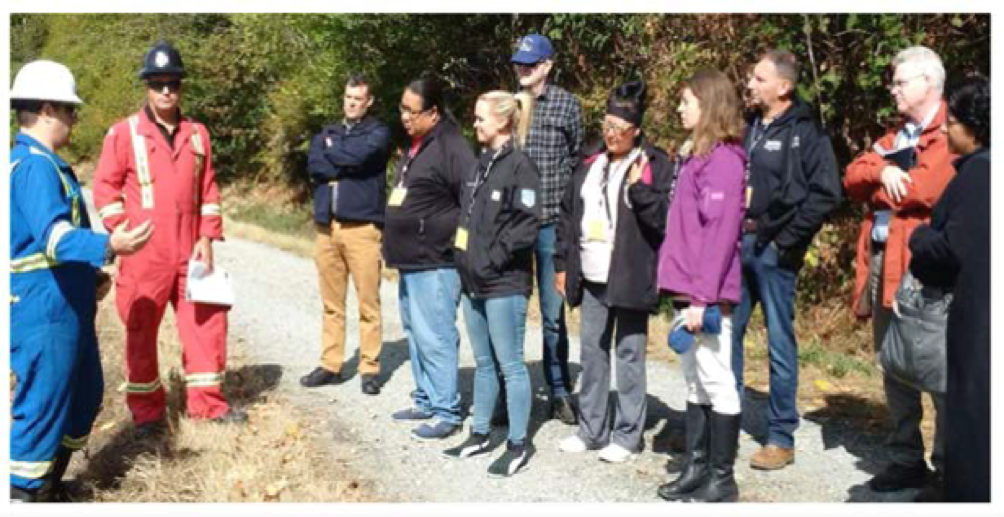Indigenous Engagement
The NEB uses a cooperative and respectful approach to engage with Indigenous Peoples to build and enhance relationships, build NEB knowledge in Indigenous communities and of Indigenous matters, and improve NEB regulatory practices, processes and information materials.
Expected Indigenous Engagement Program Outcome…
The interests of Indigenous Peoples are reflected in the NEB’s processes and lifecycle oversight.
… so that stakeholders and Indigenous Peoples share their perspectives and provide feedback regarding the NEB’s mandate and role, and our engagement activities with stakeholders and Indigenous Peoples are meaningful.
Milestones are met on the development of an approach for the involvement of Indigenous Peoples in NEB processes, specifically lifecycle oversight, to demonstrate progress towards the meaningful involvement of Indigenous Peoples in NEB processes, specifically lifecycle oversight.
Indigenous Monitoring of Major Project Construction – From Concept to Application
Together with Indigenous leaders and government representatives, NEB staff worked to co-develop the Terms of Reference for the IAMCs for the TMEP and the Enbridge Line 3 Replacement Program.
Percentage of Indigenous Peoples participating in NEB engagement activities that indicate that they had the opportunity to adequately share their views and perspectives.
- Target 75%
- Results
2016-17 No Results - Results
2017-18 100%
From there, NEB staff, together with IAMC representatives and the Paul First Nation, developed the necessary processes and training to enable Indigenous Monitors to participate in field inspections as part of the oversight of major construction. IAMC representatives and Indigenous Monitors have also attended full scale Emergency Management exercises in both Burnaby, British Columbia and Jasper, Alberta, and the first field inspection with an Indigenous Monitor took place at the Westridge Marine Terminal in March of 2018.

NEB staff actively participate in the IAMC to provide information, address issues of concern associated with the projects, and promote the necessary learnings and adaptations to effectively integrate Indigenous Monitors and the IAMC into our oversight programs for the projects.
Working toward Common Goals: Enbridge Line 21 Replacement project
We really appreciate the work of the NEB and working with us to ensure protection of the Dene environmentChief Antoine
Enbridge applied to the NEB in 2017 to replace a 2.5 km segment of its Line 21 Pipeline, also known as the Norman Wells Pipeline, after identifying a potential safety concern related to a shifting slope on the Mackenzie River. In its assessment of the application, the NEB worked closely with the Mackenzie Valley Land and Water Board, which has regulatory responsibilities under the Mackenzie Valley Resource Management Act, to ensure that local Indigenous concerns with the project were being addressed.
In addition to an environmental assessment of the project, the NEB coordinated an Oral Traditional Hearing in Fort Simpson in October 2017 with the Mackenzie Valley Land and Water Board. Enbridge representatives, six intervenors and nine commenters including Indigenous groups, local governments, Imperial Oil Resources N.W.T. Limited and the Government of the Northwest Territories participated.
The NEB attached a total of 26 mandatory project conditions to its approval of the project in January 2018, which included a requirement to file an Indigenous Monitoring Plan with the NEB that describes how local Indigenous Peoples will participate in monitoring project construction and post-construction.
